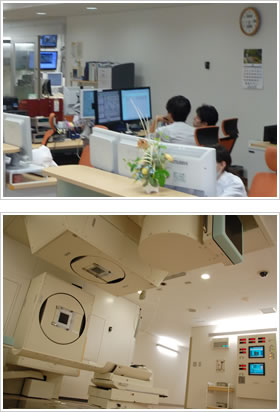Heavy ion beam is characterized by superior biological dose distribution compared with photon beams (X-rays and gamma rays), and in clinical medicine, it is principally used for treatment of malignant tumors. Clinical heavy ion beam medicine is a new academic field comprising radiation oncology, which involves basic radiology including biology, physics, chemistry, and radiation management, as well as tumor pathology, clinical oncology, diagnostic radiology and so on. In this clinical heavy ion beam medicine, the students aim to study the role of heavy ion beam radiotherapy in cancer treatment, in addition to understanding multidisciplinary cancer treatment based on a combination of surgery, chemotherapy, photon beam treatment and the like.
The course develops leaders with the ability to carry out original research as a matter of course, as well as insight based on a broad knowledge, the ability to implement research into interdisciplinary clinical treatment, and the ability to play an active and cooperative role in the international arena, founded on a robust scientific and moral sense of value. Furthermore, the objective of the course is to provide an international program for developing leaders in heavy ion beam radiotherapy who aspire to contribute to global medicine and society.
 Lectures follow an omnibus style to provide a deeper understanding of the following matters.
Lectures follow an omnibus style to provide a deeper understanding of the following matters.
In lectures, students learn clinical articles to gain an understanding of evidence-based medicine, as well as attending the technical lectures required to acquire techniques for analyzing test data and preparing scientific papers. In addition, through clinical practice, students learn diagnostic imaging for cancer, radiation therapy planning, and methods for observing the effects of radiotherapy and so on those are related to the clinical data analysis. Students are given responsibility for actual cases involving high precision heavy ion beam radiotherapy, and learn how to make treatment plans using the leading edge treatment planning equipment used in clinic and simulated patients.
Training is conducted not only in heavy ion beam radiotherapy but also through care of actual patients involving other methods of cancer treatment such as surgery, chemotherapy, photon beam therapy and so on. Students gain an understanding of the application and role of chemoradiotherapy, pre- and postoperative radiotherapy, boosted radiotherapy and so on to a range of cancers. In addition, students participate in joint medical teams including specialist physicians, nurses, pharmacists, radiotherapy technologist, and medical physicists in actual patients. In this way, they gain experience of team medicine throughout the multidisciplinary process of cancer therapy, as practical training for a future role in multidisciplinary treatment. Students also participate actively in intramural tumor boards as part of their learning.